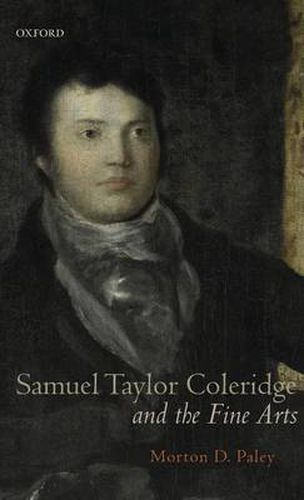Readings Newsletter
Become a Readings Member to make your shopping experience even easier.
Sign in or sign up for free!
You’re not far away from qualifying for FREE standard shipping within Australia
You’ve qualified for FREE standard shipping within Australia
The cart is loading…






Although Coleridge’s thinking and writing about the fine arts was both considerable and interesting, Coleridge and the fine arts has not been the subject of a book before.
Coleridge owed his initiation into art to Sir George Beaumont. In 1803-4 he had frequent opportunities to learn from Beaumont, to study Beaumont’s small but elegant collection and to visit private collections. Before leaving for Malta in April 1804, Coleridge wrote ‘I have learnt as much fr[om] Sir George Beaumont respecting Pictures & Painting and Paint[ers as] I ever learnt on any subject from any man in the same Space of Time.’ In Italy in 1806, Coleridge’s experience of art deepened, thanks to the American artist Washington Allston, who taught him to see the artistic sights of Rome with a painter’s eye. Coleridge also visited Florence and Pisa, and later said of the frescoes in Pisa’s Camp Santo: ‘The impression was greater, I may say, than that any poem ever made upon me.’ Back in England, Coleridge visited London exhibitions, country house collections, and even artists’ studios. In 1814, both Coleridge and Allston were in Bristol – Coleridge lecturing, Allston exhibiting. Coleridge’s ‘On the Principles of Genial Criticism’ began as a defense of Allston’s paintings but evolved into a consideration of all the arts.
This book will make readers of Coleridge aware of a dimension of his thinking that has been largely ignored until now.
$9.00 standard shipping within Australia
FREE standard shipping within Australia for orders over $100.00
Express & International shipping calculated at checkout
Although Coleridge’s thinking and writing about the fine arts was both considerable and interesting, Coleridge and the fine arts has not been the subject of a book before.
Coleridge owed his initiation into art to Sir George Beaumont. In 1803-4 he had frequent opportunities to learn from Beaumont, to study Beaumont’s small but elegant collection and to visit private collections. Before leaving for Malta in April 1804, Coleridge wrote ‘I have learnt as much fr[om] Sir George Beaumont respecting Pictures & Painting and Paint[ers as] I ever learnt on any subject from any man in the same Space of Time.’ In Italy in 1806, Coleridge’s experience of art deepened, thanks to the American artist Washington Allston, who taught him to see the artistic sights of Rome with a painter’s eye. Coleridge also visited Florence and Pisa, and later said of the frescoes in Pisa’s Camp Santo: ‘The impression was greater, I may say, than that any poem ever made upon me.’ Back in England, Coleridge visited London exhibitions, country house collections, and even artists’ studios. In 1814, both Coleridge and Allston were in Bristol – Coleridge lecturing, Allston exhibiting. Coleridge’s ‘On the Principles of Genial Criticism’ began as a defense of Allston’s paintings but evolved into a consideration of all the arts.
This book will make readers of Coleridge aware of a dimension of his thinking that has been largely ignored until now.